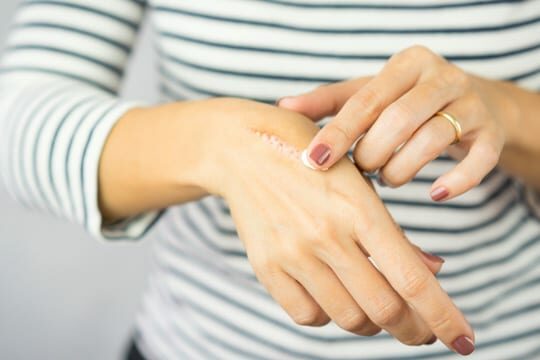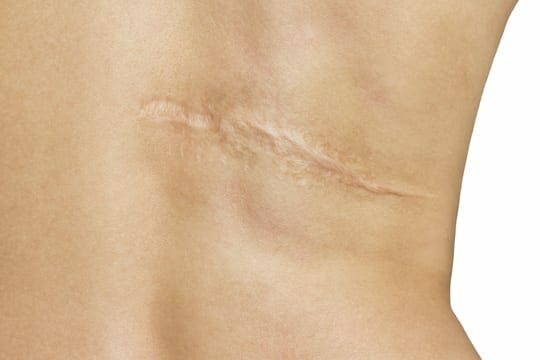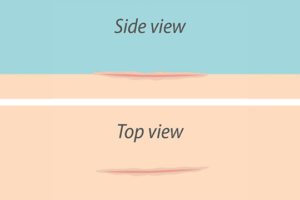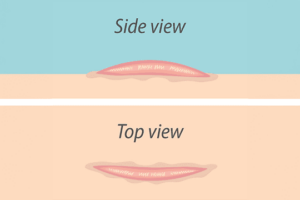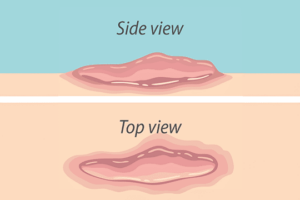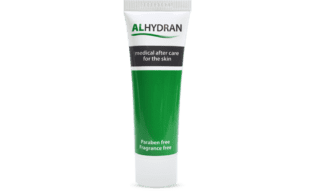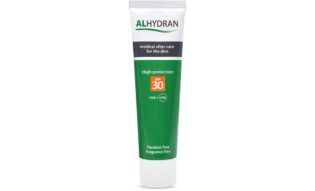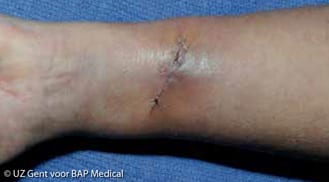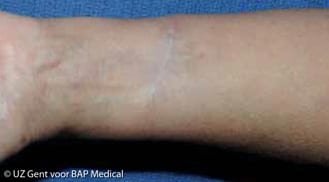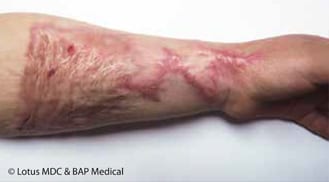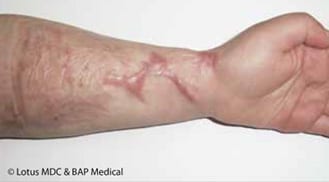Scar management by means of occlusion and hydration: A comparative study of silicones versus a hydration gel-cream.
View the article on PubMed
Publication: Burns 2013
Author(s): Hoeksema H, de Vos M, Verbelen J, Pirayesh A, Monstrey S.
Moisturisers in scar management following burn: A servey report.
View the article on PubMed
Publication: Burns 2017
Author(s): Klotz T, Kurmis R, Munn Z, Heath K, Greenwood J.
Two years of experience with a new product based on aloe vera for hydration of burn scars.
View the Article (PDF)
Publication: Presented at European Burn Assosiation (EBA) congress, Budapest, Hungary, 2007
Author(s): S. Monstrey, MD, PhD, A. Pirayesh, MD, E. Lambrecht, RN, S. Lauwaert, RN, J. Verbelen, RN, MN, H. Hoeksema, RC
Institution: Burn Centre, University Hospital Ghent, Belgium
‘Itching, is there a remedy?’ a pilotstudy with a rehydration gel-cream in burnpatients.
View the article (PDF)
Publication: Presented at European Burn Assosiation (EBA) congress, Budapest, Hungary, 2007 & The International Society for Burn Injuries (ISBI), Montreal, Canada, 2008
Author(s): H.J. van Kempen, RN, BHSc, J. Dokter, MD, I.M.M.H. Oen, MD
Institution: Burn Centre Rotterdam, the Netherlands
Effect of scar treatment products on unpleasant physical manifestations in patients suffering from extensive burn scarring.
View the article (PDF)
Publication: Presented at German-speaking Working Group for Burn Treatment (DAV), Styria, Austria, 2010
Author(s): Dr. med. Hans Ziegenthaler
Institution: Burn Rehabilitation Centre, Bad Klosterlausnitz, Germany,
Scars after large surface thermal burns – Registration of Quality of Life and therapeutic influence of Alhydran.
View the article (PDF)
Publication: Presented at European Burn Assosiation (EBA) congress, The Hague, the Netherlands, 2011
Author(s): Dr. med. Hans Ziegenthaler
Institution: Burn Rehabilitation Centre, Bad Klosterlausnitz, Germany
Application of Alhydran in the treatment of pathologic scars after cryoshape therapy.
View the article (PDF)
Publication: Presented at European Burn Assosiation (EBA) congress, The Hague, the Netherlands, 2011
Author(s): Dr. Uberto Giovannini
Institution: Dep. of Plastic Aesthetic and Reconstructive Surgery, Metz, France
Development of a new brochure making aftercare of burns more understandable for patients.
View the article (PDF)
Publication: Presented at European Burn Assosiation (EBA) congress, Vienna, Austria, 2013
Author(s): Henk Hoeksema, Katrien van Gastel, Veerle van Geertruy, Pieter Lafaire, Jozef Verbelen, Stan Monstrey
Institution: Burn Centre, University Hospital Ghent, Belgium
Psychological wellbeing – Scar.
View the article (PDF)
Publication: Presented at European Wound Management Association (EWMA) congress, Madrid, Spain, 2014
Author(s): Wound professional, United Kingdom, Stuart Ashman, Sara-Jane Kray, Tyne & Wear, UK.
Use of Alhydran cream in the treatment of burn scars following a chemical explosion – a case study.
View the article (PDF)
Publication: Presented at European Burn Assosiation (EBA) congress, Hannover, Germany, 2015
Author(s): Rina Rijkenberg
Institution: Scar and Burns Aftercare Department, Oosterbeek, the Netherlands
The effect of a topical cream application on water distribution in healthy skin and burn scars: pilot project.
View the article (PDF)
Publication: Presented at European Burn Assosiation (EBA) congress, Rotterdam, the Netherlands, 2018
Author(s): P. Moortgat, M. Anthonissen, J. Meirte, U. van Daele, T. van Hullebusch, C. Lafaire, L. de Cuyper, K. Maertens
Institution: OSCARE – Organisation for burns, scar after-care and research, Antwerp, Belgium,
International Clinical Recommendations on Scar Management.
View the article on PubMed
Publication: Plastic and reconstructive surgery, 2002
Author(s): Mustoe TA, et al.
